We use information collected through cookies and similar technologies to improve your experience on our site, analyze how you use it and for marketing purposes.
Your privacy settings
We and our partners use information collected through cookies and similar technologies to improve your experience on our site, analyze how you use it and for marketing purposes. Because we respect your right to privacy, you can choose not to allow some types of cookies. However, blocking some types of cookies may impact your experience of the site and the services we are able to offer. In some cases, data obtained from cookies is shared with third parties for analytics or marketing reasons. You can exercise your right to opt-out of that sharing at any time by disabling cookies.
Manage Consent Preferences
Necessary
Always ON
These cookies and scripts are necessary for the website to function and cannot be switched off. They are usually only set in response to actions made by you which amount to a request for services, such as setting your privacy preferences, logging in or filling in forms. You can set your browser to block oralert you about these cookies, but some parts of the site will not then work. These cookies do not store any personally identifiable information.
Analytics
These cookies and scripts allow us to count visits and traffic sources, so we can measure and improve the performance of our site. They help us know which pages are the most and least popular and see how visitors move around the site. All information these cookies collect is aggregated and therefore anonymous. If you do not allow these cookies and scripts, we will not know when you have visited our site.
Embedded Videos
These cookies and scripts may be set through our site by external video hosting services likeYouTube or Vimeo. They may be used to deliver video content on our website. It's possible for the video provider to build a profile of your interests and show you relevant adverts on this or other websites. They do not directly store personal information, but are based on uniquely identifying your browser and internet device. If you do not allow these cookies or scripts it is possible that embedded video will not function as expected.
Google Fonts
Google Fonts is a font embedding service library. Google Fonts are stored on Google's CDN. The Google Fonts API is designed to limit the collection, storage, and use of end-user data to only what is needed to serve fonts efficiently. Use of Google Fonts API is unauthenticated. No cookies are sent by website visitors to the Google Fonts API. Requests to the Google Fonts API are made to resource-specific domains, such as fonts.googleapis.com or fonts.gstatic.com. This means your font requests are separate from and don't contain any credentials you send to google.com while using other Google services that are authenticated, such as Gmail.
Marketing
These cookies and scripts may be set through our site by our advertising partners. They may be used by those companies to build a profile of your interests and show you relevant adverts on other sites. They do not store directly personal information, but are based on uniquely identifying your browser and internet device. If you do not allow these cookies and scripts, you will experience less targeted advertising.
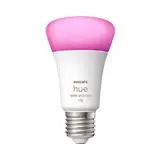
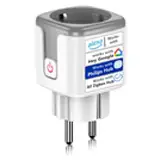
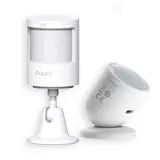
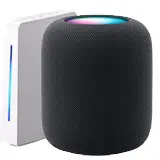
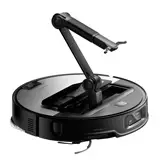

How to connect old appliances to a smart home
Do you have old appliances that you love but feel out of the smart home loop? Don't worry! You don't have to get rid of your retro toaster or your trusty coffee maker to join the automation revolution. Integrating old appliances into your smart home is easier than you think. We'll show you how to do it simply and effectively, without needing to be a tech expert.
Why connect older appliances to a smart home?
There are many good reasons to give your vintage gadgets a smart second life. Here are just a few:
Essential tools for the integration of old appliances
Before you get started, you'll need a few key tools to work the automation magic. Here's what you need:
Smart Plugs (Smart Plugs)
Intelligent switches are at the heart of integration. These are devices that plug into a normal outlet and allow you to control the power flow to an appliance through a mobile app or voice commands. There are different types, be sure to choose one that suits the power of the appliance you want to control. Some even measure energy consumption.
Smart Bulbs
Although not directly for appliances, smart bulbs are crucial to creating a complete smart environment. You can program them to turn on and off with your appliances or according to specific schedules.
Smart Home Hubs (Optional)
A smart home hub acts as the control center of your smart home. It connects all your devices and allows them to communicate with each other. Popular examples are Amazon Echo (with Alexa), Google Home (with Google Assistant) and Apple HomePod (with Siri). They are not always necessary, but they make it easier to manage and create complex automations.
Smart Sensors (Optional)
Sensors, such as motion or temperature sensors, can add even more intelligence to your home. For example, you can use a motion sensor to turn on the coffee maker when you enter the kitchen.
Steps for connecting your old appliances to a smart home
Now, let's get down to business. Here's a step-by-step guide to turning your traditional appliances into part of your smart home:
Practical examples of automation of old household appliances
To give you an idea of what you can achieve, here are some examples of automation with old appliances:
Common problems and how to fix them
Although the process is generally straightforward, problems sometimes arise. Here are some tips on how to solve them:
Security considerations
Safety is paramount when connecting electrical appliances to the mains. Follow these tips to avoid problems:
Advanced automation: Beyond on/off switching
Once you are comfortable with the basics, you can explore more advanced automation options:
Integration with motion sensors
Use motion sensors to automatically turn on lights or appliances when you enter a room. For example, the kitchen light turns on when you get up at night.
Time-of-day based automation
Program your appliances to turn on or off according to the time of day. For example, the fan automatically turns on at noon during hot days.
Integration with meteorological services
Use weather services to adjust the settings of your appliances. For example, the air conditioner turns on automatically if the outside temperature exceeds 30 degrees.
Geolocation control
Set your appliances to turn on or off when you arrive home or leave home. For example, the heater turns on automatically when you are 10 minutes away from home.
Alternatives to total replacement: retrofitting your old appliances
Remember that the goal is to avoid unnecessary replacement of your appliances. The key is to adapt them to new technologies. Consider these alternatives:
Recommendations and best practices
To get the most out of integrating your old appliances into a smart home, here are a few tips:
Conclusion: A smart home for everyone
Connecting old appliances to a smart home is not only possible, but also a smart and sustainable way to leverage technology. You don't need a huge budget or to be an IT expert. With a few devices and a little planning, you can transform your home and enjoy the convenience and efficiency of a smart home. Get started today and discover the endless possibilities automation has to offer. Explore the market for home automation deviceswhere you'll find affordable options to suit your needs. From smart plugs to motion sensors, these devices allow you to control and program your appliances remotely. Make the most of technology and transform your daily routine into a more comfortable and efficient experience.
Ready to give your old appliances a new lease of life? Share this article with your friends and family so they too can join the smart home revolution!
Related Posts
Voice assistant or physical button? Comparison of control methods
Remember when controlling a device meant pushing a button? What a time! Now, we have voice assistants that obey us just by hearing our voice. But which is better, the trusty physical button or the futuristic voice assistant? Let's find out. The Battle for Control: Voice Assistants vs. Physical Buttons Technology is advancing ...
Morning automation: how to wake up with lights and music
Waking up can be a battle. The shrill sound of the alarm jolts you out of a deep sleep, leaving you groggy and grouchy. What if there was a better way? Imagine waking up gradually with soft light and your favorite music. That's the promise of morning automation, and it's at your fingertips.What's ...
Home Assistant vs Alexa vs Google Home: Which one to choose?
Is your home ready to make the leap to artificial intelligence? Controlling the lights with your voice, turning up the heating before you get home, or even programming the watering of the garden are just some of the wonders that home automation puts within our reach. But which ecosystem to start with? The choice between Home ...
TOP 10 most useful voice commands for a smart home
Can you imagine controlling your home with just your voice? A smart home is no longer the stuff of science fiction. It's an accessible reality, and voice commands are the key to unlocking its potential. Stop looking for switches and start talking. Discover the 10 most useful voice commands that will transform your life ...